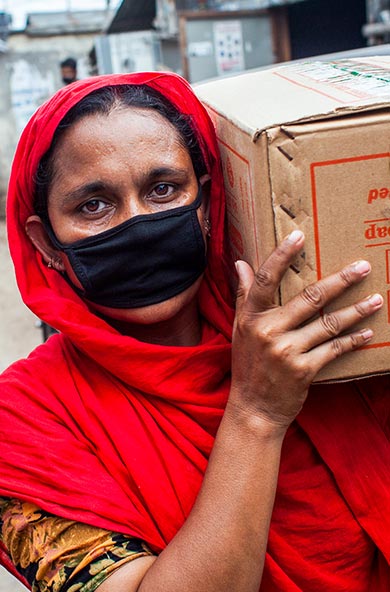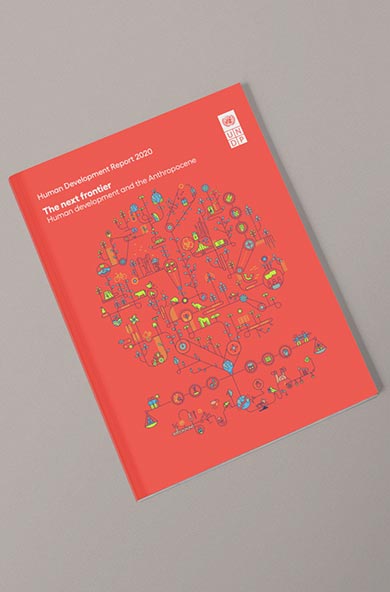
With increasing multi-dimensional challenges, including climate change, growing automation processes, and an increasingly unstable geopolitical context, there is a risk of further widening structural inequalities and impeding economic transformation processes. As the recent UNDP report on Structural Transformation and Labour Markets in Asia and the Pacific highlights, advancing economic transformation processes in countries will require actions along four key areas.
Economic transformation stands as the cornerstone for countries to propel growth, augment productivity, and elevate living standards.
Over the past few decades, some countries in the Asia Pacific region have been very successful in advancing this transformation, exhibiting, along the way, rapid declines in working poverty, high volumes of workers transitioning out of the agriculture sector, substantial increases in wage and salaried workers, rising literacy rates, impressive employment-to-population ratios, and high female labor force participation rates. For example, China saw a rapid decline in the share of workers employed in agriculture, from 60% in 1991 to 25% in 2019, and Viet Nam from 75% to 35% in the same period. These countries also saw a considerable increase in wage and salaried workers, from 30.6% to 54% in China and 15.2% to 45.1% in Viet Nam during the same period.
Notwithstanding the successes of a few countries, the path to economic transformation for most countries in the region has not been smooth. Deeply rooted inequalities partially explain why most countries are lagging in their economic transformation processes and why these countries have been particularly affected by the multi-dimensional impacts of the COVID-19 pandemic. Even before the COVID-19 crisis, working poverty and informality rates in labor markets were elevated in the region, with almost 300 million workers in working poverty and 1.3 billion workers in informal employment. More than a 100 million young workers in the region were estimated to be employed in sectors that were highly vulnerable to the effects of the crisis, and 160 million youth were not employed, enrolled in education or in training – roughly 25% of the region’s youth population.
With increasing multi-dimensional challenges, including climate change, growing automation processes, and an increasingly unstable geopolitical context, there is a risk of further widening structural inequalities and impeding economic transformation processes. Projections show that one in five jobs in the region’s labor markets are expected to be affected by automation, while one in eight are projected to be replaced because of it. Pollution-intensive jobs are also at a high risk of being displaced, impacting millions of workers.
The region is not equipped to meet these growing trends. For instance, a significant percent of the population lacks even basic ICT skills. Even in high-income countries like Japan and Singapore, more than 30% of the population lacks basic ICT skills. In countries such as Pakistan and the Philippines, this share can exceed 90%. Gender disparities in ICT skills are even more stark.
As the recent UNDP report on Structural Transformation and Labour Markets in Asia and the Pacific highlights, advancing economic transformation processes in countries will require actions along four key areas.
First, by promoting a green transition in economic transformation processes by building capacity in public institutions at various decision-making levels, reducing the skills gap in green technologies, developing state capacity to measure and monitor the growth of green jobs across different sectors, bolstering the flow of investment capital toward climate-friendly small enterprises, and implementing policies that ensure a ‘just’ transition. For example, In China, the government is taking steps to develop its hydrogen economy, including through enhancing technical vocational education and training for the hydrogen industry, to nurture talents needed across the hydrogen value chain. The Monetary Authority of Singapore, the Global Legal Entity Identifier Foundation, and UNDP are collaborating on a joint initiative to streamline MSMEs' ESG reporting processes, thereby enhancing their access to global financing and supply chain opportunities.
Second, by leveraging digital transformation for job market growth through targeted investments in skills-building, particularly for those most affected by automation and digitalization, enabling universal access to digital infrastructure, and aligning the green and digital transitions, for instance, by investing in sectors that bridge automation and sustainability. The region has good examples. Bangladesh's ICT Division and Huawei launched the Digital Training Bus Project to teach basic digital skills to rural women. By the end of 2019, over 63,000 women were trained, with plans to train another 166,000 by 2023. In 2021, Thailand's government initiated a program through its Digital Economy Promotion Agency to bolster business digitalization. It offers SMEs and MSMEs a 200% tax deduction for acquiring digital services, robotics, and IoT devices.
Third, by prioritizing inclusive policies for job market recovery and resilience through addressing gender-based skill gaps and digital access, supporting inclusive entrepreneurship with tailored financing for women and youth, and setting specific inclusion targets in national strategies to protect and promote jobs during crises. For example, the Government of the Philippines established a special financing facility that targeted women entrepreneurs during the pandemic and provided collateral exemption. Pakistan's government established gender targets to support women in accessing emergency cash programs during the pandemic. They tailored eligibility criteria and delivery methods to address women's unique challenges, including time constraints, mobility issues, and cultural barriers to interacting with male officials.
Fourth, by enhancing social protection in labor markets by adapting to the evolving nature of work and ensuring equitable access to employment benefits regardless of employment status. It is vital to explore bold reforms like universal healthcare and guaranteed minimum income, providing a foundational layer of social protection across various life stages. Strengthening social safety nets for informal workers and caregivers is essential, alongside implementing active labor market policies to coordinate reskilling initiatives with robust social protection programs, facilitating transitions to higher-value employment. Some countries in the region are extending social protection to gig workers. In 2020, Indonesia introduced BP Jamsostek, offering health insurance, work accident coverage, and pensions to gig workers, including those in ride-hailing and food delivery.
Implementing these policy options in this dynamic region can revitalize structural transformation, boost productivity growth, and enhance labor market resilience against future shocks.

 Locations
Locations













